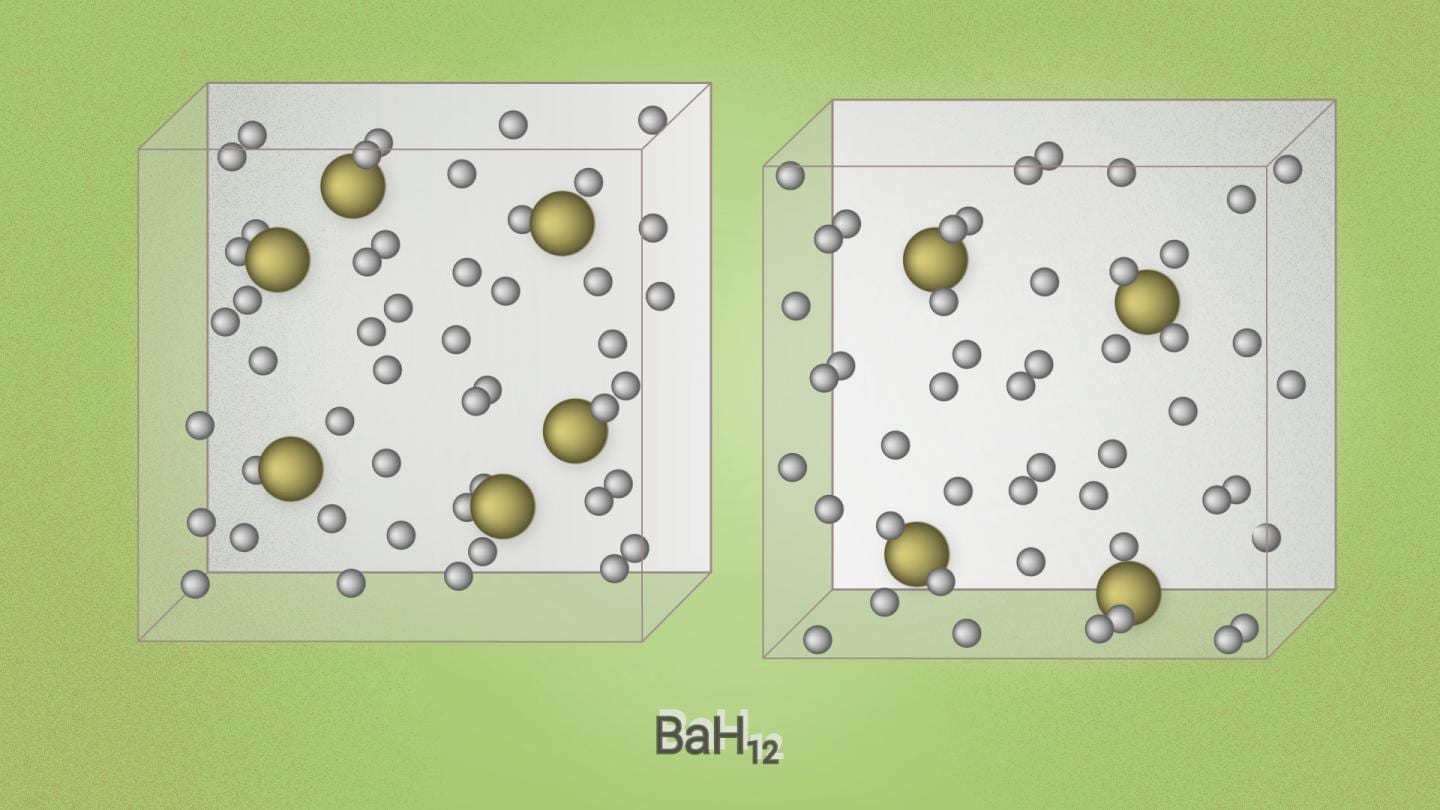
Scientists have synthesized an unusual superconducting barium superhydride
CREDIT: Pavel Odinev / Skoltech
A group of scientists from Russia, China, and the United States predicted and then experimentally obtained barium superhydrides’ new unusual superconductors. The study was published in Nature Communications.
Chemists and physicists have been hunting down room-temperature superconductors since the first half of the 20th century. Initially, high hopes were placed on metallic hydrogen, but solid metallic hydrogen can become superconducting only at extremely high pressures of several million atmospheres, as it later transpired. Chemists then tried adding other elements to hydrogen in the hope of attaining superconductivity by stabilizing the metallic state under less challenging conditions. Scientists, including the research team led by Skoltech Professor Artem R. Oganov, predicted and experimentally obtained a set of compounds with a huge number of hydrogen atoms, such as ThH9 and ThH10 PrH9, NdH7, NdH9, YH6, and so on. Yet, the race for higher hydrogen content in such bizarre hydrides and especially for higher superconducting transition temperature is still on.
In their latest study, scientists from Oganov’s laboratory and their colleagues from China and the United States analyzed all possible barium hydrides using the unique theoretical approaches developed by Oganov and his students and implemented in their USPEX code. Finally, they selected BaH12, a compound with one of the highest hydrogen contents. The researchers obtained the compound experimentally, demonstrated its superconductivity, and studied its crystal structure. BaH12 turned out to be quite a remarkable compound with a structure formed by molecular groups of two and three hydrogen atoms and acting as a molecular superconductor. Thanks to its molecular structure, BaH12 is not a high-temperature superconductor: its critical temperature is -253 degrees Celsius. The study marks significant progress in understanding what structures may someday perform as room-temperature superconductors in real devices.
“On October 14, 2020, American scientists reported the discovery of a room-temperature superconductor, ushering in an era of room superconductivity. The new superconductor composition has not been disclosed, but its room-temperature superconductivity has been convincingly demonstrated. A century-long dream has come true! Recall that superconductivity was first observed in mercury at -269 degrees Celsius over 100 years ago. The new material is unlikely to have immediate practical applications, as it can only be synthesized in microscopic amounts under extremely high pressures of nearly three million atmospheres. We should continue searching for new materials and studying their properties so that we could someday figure out how to achieve room-temperature superconductivity under normal pressure,” Oganov says.
The Latest Updates from Bing News & Google News
Go deeper with Bing News on:
Room-temperature superconductivity
- Judge dismisses superconductivity physicist’s lawsuit against university
Ranga Dias sued his university, in part, for allegedly conducting a biased investigation, which found he had committed extensive scientific misconduct.
- New Video of Strong Full Levitation of PCPOSOS Room Temperature Superconductor
A room temperature superconductor is VERY hard work ... what they say is solid evidence that LK99 is non-superconducting and thus disproving such superconductivity claims. This same research was ...
- Retractions are part of science, but misconduct isn’t — lessons from a superconductivity lab
Journals, funders and institutions that employ researchers all want to produce or disseminate rigorous scientific knowledge — and all can learn lessons from misconduct cases.
- Scientists Use Lasers to Induce Magnetism at Room Temperature, Defying Conventional Quantum Limits
The potential of quantum technology is huge but is today largely limited to the extremely cold environments of laboratories. Now, researchers at Stockholm University, at the Nordic Institute for Theor ...
- Superconductivity: the search and the scandal
Recent high profile controversies haven't deterred scientists from searching for one of research's ultimate prizes: room temperature superconductors. Kit Chapman reports on the claims ...
Go deeper with Google Headlines on:
Room-temperature superconductivity
[google_news title=”” keyword=”Room-temperature superconductivity” num_posts=”5″ blurb_length=”0″ show_thumb=”left”]
Go deeper with Bing News on:
Superconductor
- All About Indian-Origin Princeton Student Arrested For Pro-Palestine Protests
An Indian-originstudent,studying at Princeton University in theUS,has been arrested during the pro-Palestine demonstrations on campus.
- Manchester Scientists Find Novel One-Dimensional Superconductor
In a significant development in the field of superconductivity, researchers at The University of Manchester have successfully achieved robust superconductivity in high magnetic fields using a newly ...
- New Video of Strong Full Levitation of PCPOSOS Room Temperature Superconductor
New video from SCTL Korea room temperature superconductor experimenters shows a very strong full levitation effect. Full levitation is evidence of the Meissner effect found only in superconductors. I ...
- Clearday introduces digital assistants in residential communities
Clearday has the solutions. James Walesa, CEO and Founder, said, “The demand for caregiving grows daily. The last reports I saw discussed 43 job openings for every current caregiver. The Clearday ...
- Scientists develop novel one-dimensional superconductor
In a significant development in the field of superconductivity, researchers at The University of Manchester have successfully achieved robust superconductivity in high magnetic fields using a newly ...
Go deeper with Google Headlines on:
Superconductor
[google_news title=”” keyword=”superconductor” num_posts=”5″ blurb_length=”0″ show_thumb=”left”]










